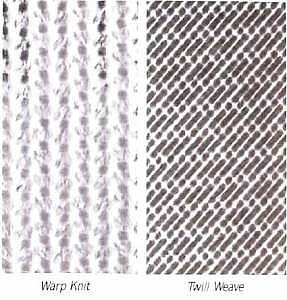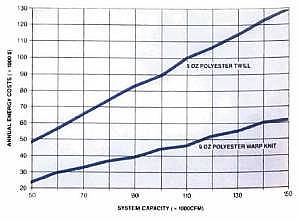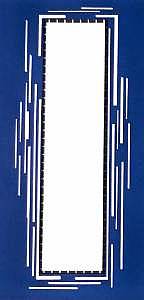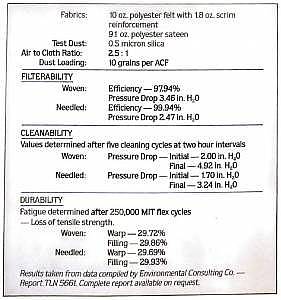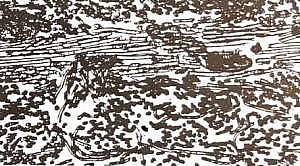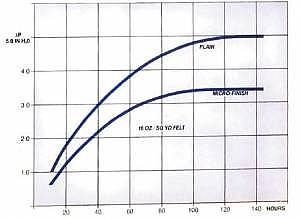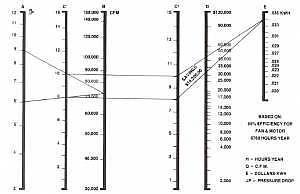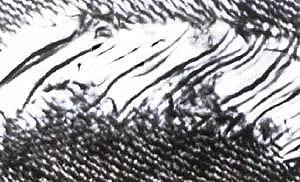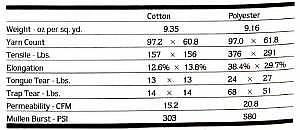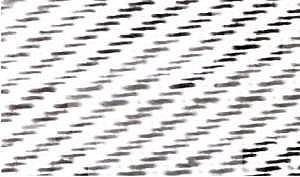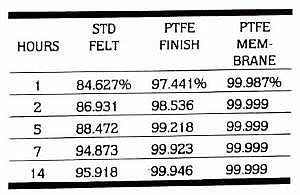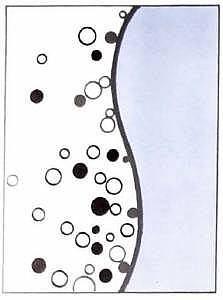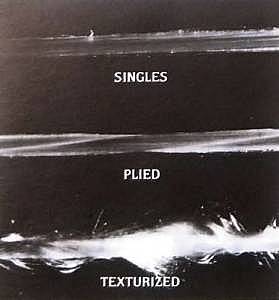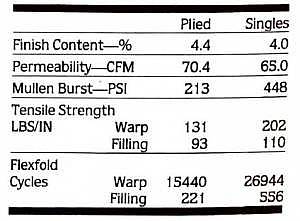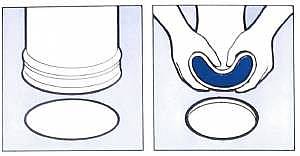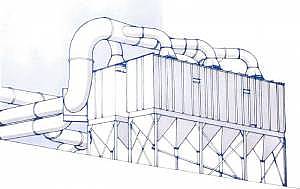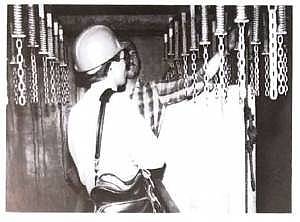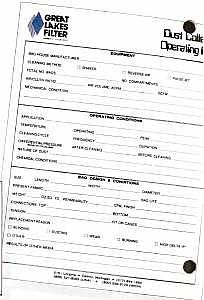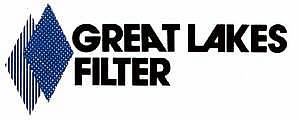If you’ve been using the same style dust collecting bags for many years, operating your dust collector could be costing much more than it should. Here are five areas of concern where current
technology can save you money the next time you change bags …
1. Reduce Energy Consumption: Proper fabric selection can lower pressure differentials reducing the cost of electricity per cubic foot of air.
2. Longer Bag Life: More durable fabrics can increase the length of time bags will function efficiently creating annual savings in bag costs and installation.
3. Lower Bag Cost: Replacement of existing fabric, felt or woven, with lower cost media having equal durability and filtration efficiency.
4. Less Installation Cost: Modern sealing and fastening devices can save time and labor of bag replacement. Assured fit and tensioning can lead to better filtration and longer bag life.
5 . Proper Conditions for Efficient Filtration: Assuming proper fabric selection, important factors influencing bag life are installation, maintenance, temperature regulation, and moisture control.
Reduce Energy Consumption
FILAMENT POLYESTER WARP KNIT VS. TWILL WEAVE
Many collectors are presently equipped with all filament polyester twill weave fabric bags to overcome the difficulty of poor dust release. The key is the use of filament yarns. Offsetting the improved dust release feature of this fabric are reduced bag life. insufficient particle retention and relatively high energy consumption.
All three deficiencies can be overcome by using all filament yarn, warp knit fabric. This construction is considerably stronger in burst. tensile strength and abrasion resistance. has better particle entrapment. less air resistance. and even better cake discharge. Your system can be operated at the same air flow capacity with significantly less energy consumption.
FABRIC PERFORMANCE: ENERGY COSTS (Based on $.062/kwh)
NOTE: This comparison relates to warp knit constructions only . .. not to be confused with circular knits.
NEEDLED FELT VS. WOVEN POLYESTER
Possibly the most dramatic recent innovation in dust bag media is the development of needled felt especially designed to replace woven fabric in shaker clean collectors. This creates the opportunity to reduce energy cost per cubic foot of air. improve filtration efficiency and maintain bag life at no increase in bag cost.
CONCLUSIONS OF COMPARATIVE STUDY
MICRO-FINISH™ FELT
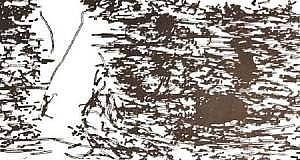
Characteristic of an unfinished felt surface are geometrical discontinuities inherent in the needle felting process creating high air point velocities … points at which dust is driven deeply into the felt where it is difficult to dislodge. This requires frequent pulsing and inhibits proper cake formation.
Great Lakes· Micro-Finish minimizes surface discontinuities and creates a surface sheen which promotes uniform cake formation and its easy discharge. Considerably lower pressure drops will be experienced reducing energy consumption along with less frequent cleaning cycles.
THE BOTTOM LINE IS THE POWER LINE
Measuring energy consumption is no longer a mystery resolved only by the use of expensive instrumentation. With an FMC nomograph and readily available information it’s easy to compute annual power cost and determine the effectiveness of various media. Having selected a more efficient medium, the choice becomes that of either maintaining air flow and reducing cash flow, or increasing air flow while keeping cashflow constant. Either way, it’s less cost per cubic foot of air filtered.
TO USE THE NOMOGRAPH THE FOLLOWING STEPS SHOULD BE TAKEN:
1. DRAW LINE FROM A TO B.
2. DRAW LINE FROM C’ PERPENDICULAR TO C’.
3. DRAW LINE FROM POINT ON C’ TO DESIRED POWER COST ON LINE E.
4. READ ANNUAL FAN POWER COST ON LINED IN DOLLARS PER YEAR.
5. REPEAT PROCEDURE FOR COMPARISON.
Longer Bag Life
POLYESTER VS. COTTON SATEEN

Cotton sateen was the standard of the industry for many years and is still widely used in shake collectors. However, the logical replacement in most applications is the equivalent polyester sateen fabric.
Comparative abrasion test results reveal the superior wear resistance of polyester; tensile, tear, and burst strengths are about double. Hence. life expectancy under identical operating conditions is two to three times as indicated by comparative test results.
Polyester also provides advantages of superior chemical resistance. low moisture absorption and higher temperature limitations when heat set.
COMPARISON OF PHYSICAL PROPERTIES
Cotton Versus Polyester Sateen
Longer Bag Life & Lower-Cost
SATEEN VS. POLYESTER TWILL
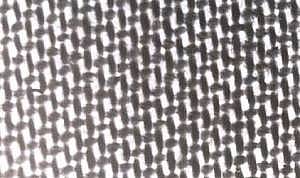
A fabric still in use extensively is combination _(spun and filament yarns) polyester twill. The historical reasons for its use are no longer valid.
If it was installed for improved cake release. polyester warp knit will out outperform it. But. more likely. it was chosen to replace cotton at slightly elevated temperatures. In that case a change to heat set, polyester sateen is recommended. You’ll benefit from bags that last longer, filter better, and cost less.
COMPARISON OF PHYSICAL PROPERTIES
Polyester Sateen Versus Combination Twill
Lower Bag Cost
PTFE, MEMBRANE VS. APPLIED FINISH
Not all the tough applications require PTFE membranes now that a viable alternative exists.
At one time membrane felt laminates were the only solution to critical filtration and difficult dust cake release situations. The economical alternative is PTFE surface finish on polyester or Nomex® felts which will clean and filter adequately in many of these applications. Quite likely you will experience lower pressure drops and less frequent cleaning cycles.
Comparative testing using 1 /2 micron silica dust reveal favorable results after a brief conditioning period.
POLYESTER FELT EFFICIENCY
To determine if it’s right for your plant. try a set of bags or let us arrange a laboratory comparison with your dust. You ‘ll welcome the cost savings.
Lower Bag Cost & Energy Saving
HI-TENACITY FELT
Your felt bags will cost less with equivalent efficiency when made of Great Lakes Hi -Tenacity felt. Add to this the potential for energy saving and you ‘ll pocket a tidy annual WINDFALL.
An advanced concept of fiber orientation achieves equal particle retention with lower fabric weight. typically 12 oz. versus 16 oz. Test data using 1 /2 micron silica challenge dust reveal 92 – 95% efficiencies at 5:1 air to cloth ratios. Superior calendering properties create more uniform, smoother surfaces for better cake release.
COMPARATIVE TEST RESULTS CONVENTIONAL VERSUS HI-TENACITY FELTS
CONCLUSION: At temperatures less than 200°F. Great Lakes Hi -Tenacity 12 oz felt will provide equivalent particle retention. lower pressure drop. lower cost per bag and similar bag life compared to conventional 16 oz felt.
At the same weight. 16 oz. and cost Hi -Tenacity felt will offer superior filtration efficiency and longer bag life under most conditions.
Lower Bag Cost & Longer Life
SINGLES VS. PLIED GLASS YARNS
The premium cost of plied yarns in woven fiberglass fabrics is usually not necessary in filtration. Singles yarns create stronger, tighter fabrics ideal for high temperature, hot gas filtration. Where ultimate collection efficiency is required, such as cement, carbon black and lime, texturized filling yarns enhance particle retention.
COMPARISON OF PLIED VS. SINGLES YARNS
9.6 oz. 54 x 30 Count Fiberglass Gl-096 Acid Resistant Finish
Less Installation Cost
BEADED SNAP RING QUICK, AIR TIGHT BAG SEAT
Get rid of those old thimbles or garter springs. Just make sure the tube sheet holes are true circles and all the same diameter.
You can then equip your bags with double beaded snap rings. . . . 3/4′ or 1″ wide stainless bands with upper and lower gaskets to fit the tube sheet. made to + / – 1 /32″ accuracy to prevent bypass.
Installation is easy. Simply collapse the bag bottom by squeezing opposite sides together. place in tube sheet and release. Removal is even easier. You’ll never own another thimble or double garter spring type again. Recommended for bag diameters of 4 to 6 inches.
TENSION SPRING AND CAP INSTALLATION
End the annoying task of tensioning each bag separately every time you change bags. Replace the conventional strap hangers in your bag house with spring loaded “J” hooks. These need only be adjusted once and they’re set forever. The bags come with disposable caps instead of hanging straps which hook in place. ready to operate.
Bags will clean better because they’ll be fully open top to bottom. no restricting pleats. Increased usable cloth area. 7 – 10% more filtration area, will expand air flow capacity and extend bag life.
Proper Operating Conditions
Your collector is no better than its bags and the fabric they’re made of. However, to achieve best results, bags must be installed correctly and the equipment functioning properly. Several common problems that can impede performance are:
- Improper tensioning
- Incorrect seating
- Excessive air to cloth ratios
- Sparks entering collector
- Poorly timed cleaning frequency
- Formation of excessive dust cake
- Deficiencies causing worn bags
- Excessive temperatures
- Moisture in gas stream
- Chemical attack of fabric or sheet metal
- Leaks in system
Providing the information called for in our questionnaire along with a ” failed” bag will set the stage for creative recommendations.
What’s Best for Your Collector
OUR SPECIALISTS MAKE HOUSE CALLS
Though phone calls cost less and often suffice. frequently there’s nothing better than a “house call” … . bag house, that is. A hands-on learning experience will enable a specialist to cope with problems seldom unique to him. At the same time. he’ll make a survey of all your bag houses and present a consolidated report. This will highlight operating conditions and experience within a given plant providing comparative information which often leads to significant economies.
The familiar stance. “If it ain’t broke. don’t fix it” may be comfortable but not affordable.
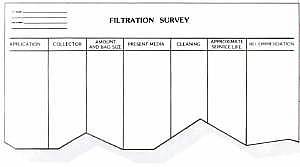
INDUSTRIAL FILTRATION APPLICATIONS
Our Only Business
The same thoughtful procedure to select the best possible dust bags obtains for all types of dry and liquid filtration. Great Lakes commitment to excellence is uncompromised in any of these product lines. whether our own make or manufactured for us for distribution.
AC DELCO – Vehicle Filters
ALSOP ENGINEERING – Pads & Housings
AIR MAZE – Filters and Air/ Oil Separators
FILTERITE – Vessels, Cartridges, and Membranes
FLUID DYNAMICS – Metallic Elements
FLUITEK – Replacement Elements
KOCH – Air Filtration
U F STRAINRITE – Vessels and Bags
HVAC Filters
Coolant Media
Die Cut Filter Media
Filter Presses, Cloth, Paper, and Pads
Flat Bed Filters
Oil Reclamation Systems
Oil/Water Coalescer Separators
Sand Filters
Strainers and Screens
Waste Water Treatment Systems
With virtually every type of industrial filter available. our only constraint is what’s best for your application.
Supporting data from independent testing laboratories available to confirm technical information in this report.
Click Here to Download PDF Version

